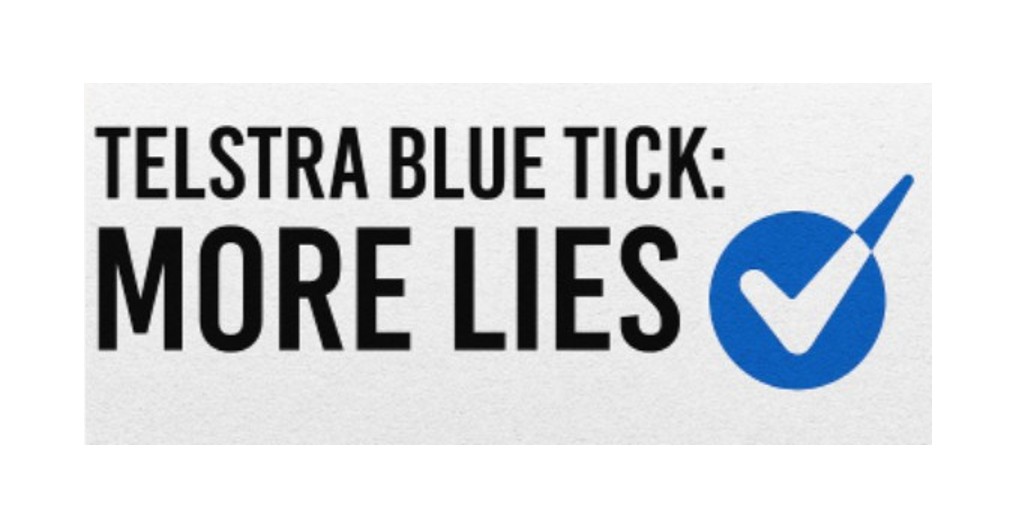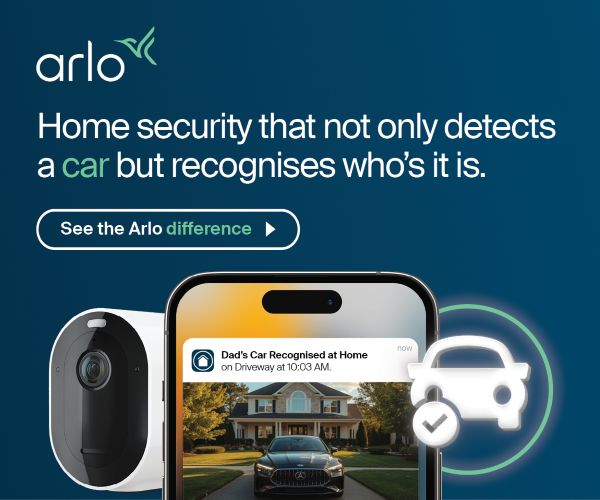Telstra Blue Tick Part V is about the blatant, bald-faced lies that Telstra sprouts about Blue Tick phones – the ones that are supposed to have decent regional and rural reception.
Reader Brian writes:
I live about 20k out of Tamworth and just bought a Google Pixel 10 Pro XL from Telstra Tamworth after being assured it was Blue Tick certified and was suitable for rural use. The only problem is that it does not even get a signal at home, where my old Samsung S22 does. I Googled Blue Tick, and CyberShack came up. Can you help because Telstra won’t?
Our advice was to ask Telstra to upgrade to the S25, S25+ or S25 Ultra and walk away from them.
On 21 August, Telstra announced that the Google Pixel 10 Pro and Pro XL were Blue Tick certified phones for rural use. We received the Pixel 10 Pro XL shortly after, and as is our tradition, waited until the first system update that gave us the 5 September security patch. We also waited because Google locks review phones for many synthetic benchmarks (like Geekbench 6.5, GFX Bench, AiTuTu or AnTuTu), and we need the results to set some benchmarks.
Two weeks ago, I re-ran the benchmarks and got odd results. Then, around 12 October, came the October update (with a 5 October security patch). Technically, the phone is stable now, and all restrictions should be disabled.
Today (19 October, when I wrote this), there are still issues with benchmarks that I have raised with Google. These are not bad issues, but I need to be sure of the results before I publish the review.
Which brings me to Telstra Blue Tick Part: More bloody lies
The Google Pixel 10 (all versions) uses the same Samsung Exynos 5400 modem as the Google Pixel 9. Our analytics software shows that both the 9 and 10 have identical Samsung S LSI Vendor RIL: 5400 V2.3 modems.
The phones have an identical antenna setup (the 10 is just an updated 9), with the only real difference being the CPU/GPU/NPU – all of which have nothing to do with phone reception.
So why would the Google Pixel 10 Pro and Pro XL get Bluetick when the 9-series did not?
The results below are the best of three tests since launch. Hint: there are no significant differences.
| LTE and 5G | Pixel 9 Pro XL | Pixel 10 Pro XL |
| SIM | Single SIM and eSIM | Single SIM and eSIM |
| Active | DSDS (Dual SIM, Dual Standby) Only one active at a time. | DSDS (Dual SIM, Dual Standby) Only one active at a time. |
| Ringtone | Single | Single |
| VoLTE | Yes | Yes |
| Wi-Fi calling | Yes | Yes |
| 4G Bands | 1/2/3/4/5/7/8/12/13/14/ 17/18/19/20/21/25/26/28/ 29/30/32/38/39/40/41/42/48/66/71/75 | 1/2/3/4/5/7/8/12/13/14/ 17/18/19/20/21/25/26/28/ 29/30/32/38/39/40/41/42/48/66/71/75 |
| Comment | All Australian and international bands | All Australian and international bands |
| 5G sub-6Ghz | n1/2/3/5/7/8/12/14/20/25/26/28/ 30/38/40/41/66/71/75/76/77/78/79 | 1/2/3/5/7/8/12/14/20/25/26/28 /30/38/40/41/66/71/75/76/77/78/79 |
| Comment | All sub-6GHGz bands | All sub-6GHGz bands |
| mmWave | No | No |
Test Boost Mobile, Telstra 5G retail network (5G capped at 150/25Mbps)
| DL/UL, ms | 34.1/14.5/29ms (band 28) average | 38.8/22.2/38ms (band 28), but a longer lag |
| Tower 1 | From -81 to -92 dBm 631 fw to 6.3 pW Picked up a 5G signal, but unusable. | From -81 to -94 dBm and 398.1 fW to 7.9 pW Picked up a 5G signal, but unusable. |
| Tower 2 | No | No |
| Tower 3 | No | No |
| Tower 4 | No | No |
| Indoor | No usable indoor coverage | No usable indoor coverage |
| Comment | Strictly a city and suburbs phone where there is good tower coverage. | Strictly a city and suburbs phone where there is good tower coverage. |


Telstra Blue Tick is Bull Shit
Before we made any such claims, we travelled widely over the Central Coast with the Pixel 9 Pro XL and 10 Pro XL to verify any claims. In every case the both phones performed almost identically.
Now to the rest of the so-called Blue-tick devices
A list is here. Our assessment is from reviews or reader feedback.
Samsung 2025 claimed Blue Tick for regional use
- Flip7: City and suburban use only
- Fold7: Regional, but not sure of its rural signal strength (antenna design issues)
- S25 Edge: City and suburban use only (antenna design issues)
- S25 FE: City and suburban use only
- S25 Ultra: City, suburb, regional and rural use
- S25+: City, suburb, regional and rural use
- S25: City, suburb, regional and rural use
- A17: City and suburban use only
- A36: Regional, but not sure of its rural signal strength
- A56: City and suburban use only
Samsung 2024
- S24: City and suburban use only
- S24+: City and suburban use only
- S24 FE: City and suburban use only
- S24 Ultra: City, suburb, regional and rural use
- Xcover7: City and suburban use only
We could go on, but all it proves is that Telstra lies about Blue Tick (and whatever else) and is only interested in selling its expensive 5G plans to rural and regional inhabitants who have a snowflake’s chance in hell of ever getting 5G. Since 3G closed, it is vital to get a phone that has the best chance of 4G band 28 (700 Hz) up to 20km from a tower. Band 3 (1800 Hz) is OK only if you are near a tower.
If you would like to read about our readers’ experiences, you can read more of Telstra’s Blue Tick Bull Shit.
CyberShack’s view: Telstra Blue Tick Part V. How does Telstra continually get away with such blatant lies?
As you may gather, we call out BS whenever we see it. It is the same with Telstra’s vastly overrated, so-called Wi-Fi 7 modem/router (and previous generation models) that are the root cause of so many NBN problems. Its new SM4 is worse than the SM3 Wi-Fi 6 it replaced.
- Telstra Smart Modem 3 – not all that smart or fast (update after test – network review)
- Telstra Smart Modem 4 – still a crappy NBN modem. Here is why (update).
- Crappy NBN modems – the lessons we learned from our free advice
Add to that fines for (these were just the easy ones to find)
- $18 million by the Federal Court for breaching Australian Consumer Law by secretly moving nearly 9,000 Belong customers to a slower internet plan without informing them or lowering the plan cost.
- $50 million in penalties for engaging in unconscionable conduct when it sold mobile contracts to more than 100 Indigenous consumers across three states and territories.
- $306,360 infringement notice issued by the Australian Communications and Media Authority (ACMA) for failing to provide accurate details of thousands of customers to the Integrated Public Number Database (IPND).
- $3m over Triple Zero outage (Dec 2024)
- $15 million for failing to ensure some customers could achieve the internet speeds they were paying for.
- $18,780 (maximum fine) for disabling the connection to the emergency call relay service used by people with hearing and speech impairments.
- $1.55m for failings in thwarting SIM-swap scams for 7000 customers.
- $626,000 fine after spamming Australians with more than 10 million texts.
- $2.5 million in refunds, with penalties for overcharging more than 10,000 customers nearly $2.5 million across 12 years
- $10 million for misleading customers over games and ringtones (2018)
- $2.5 million in part for not making 50,000 phone numbers silent, and Belong failed to update IPND data on its customers on more than 65,000 occasions.
Is this a company you want to do business with?










4 comments
Joe
I know it’s outside your field of expertise but do you know of anyone who could look into the biased claims and Bull Shit and dismantle the erroneous costings about our renewable energy system.
I benefitted greatly from your in-depth analysis of solar panels which enabled me to make an informed decision when I installed them on my home.
It would be so enlightening if an honest and factual debate could be had to clarify how by reducing our 1.4% of the climate change problem and just how net zero is going to save the planet.
Ray Shaw
I will reach out to our contacts and see if we can get something going. From my perspective this is a touchy subject because you have the climate believers and the climate denyers and the great unwashed inbetween.
Terry
Walked away from them well over 20 years ago and I have no intention of ever going back because I can’t think of any reason that I want to pay through the nose. I went to Optus but eventually dropped them for Aussie, and Kogan (Vodaphone wholesale) for mobile. At less than $150 p.a. pre-paid, I’m happy with Kogan and have not had a problem in over 5 years, even in most regional areas that I visit.
Ray Shaw
Good to hear and it shows alternatives to Telstra do exist.